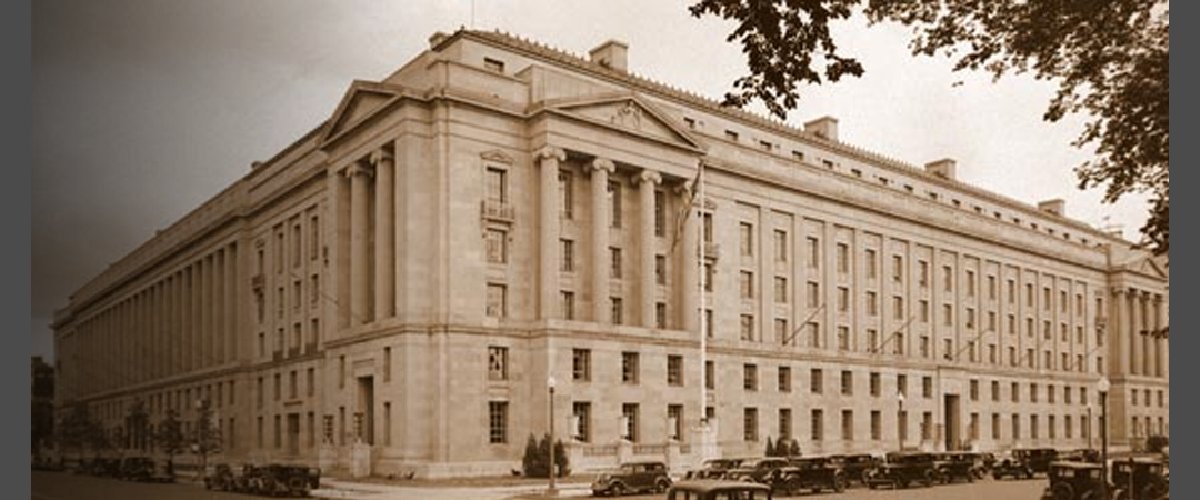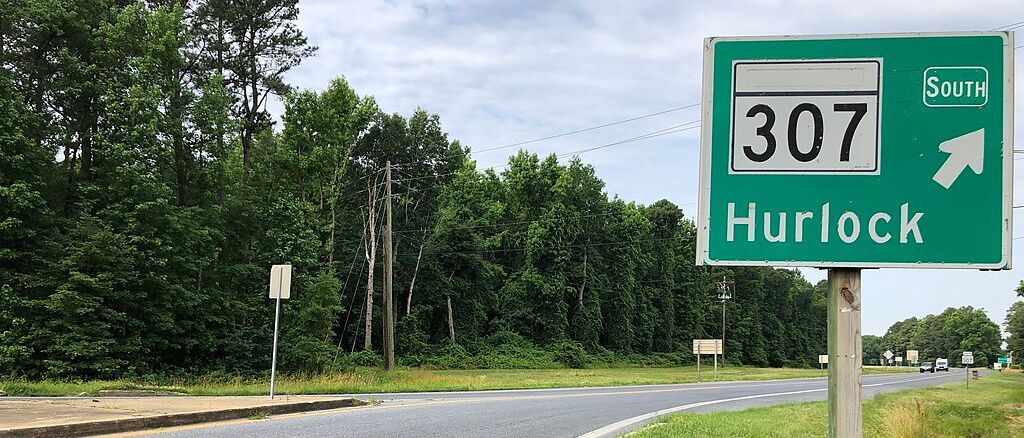Maryland’s Education ‘Blueprint’ Struggles to Expand Pre-K

As a group of 4-year-old boys worked to create a towering building block castle in their colorful Montgomery County Public Schools pre-K classroom, Head Start teacher Molly Scherf reminded them it is important to build a strong foundation.
The boys used their tiny hands to create the tower piece by piece, building the foundation to their castle and for their future education.
With research showing children who attend pre-K perform better in later years, the Blueprint for Maryland’s Future — the state’s landmark education plan — aims to make pre-K much more widely available to every 3- and 4-year-old in the state.
Scherf, who has worked in early childhood education for 30 years, said it’s a great idea.
“[Pre-K] is not just all about learning the letters of the alphabet or learning how to count to 10; it's also learning how to get along with your peers,” she said.
The state’s plan to make pre-K available to all children and free to low- and moderate-income families faces some serious struggles, however. The Blueprint relies on a mix of private providers and public schools to expand the availability of pre-K — but many districts are struggling to enlist enough private providers. On top of that, some public schools that would otherwise host the pre-K population don’t have the room to do so.
Educators in the state call the Blueprint pre-K plan a “mixed delivery system” that aims to expand pre-K without making it a public school monopoly.
“So in theory, it's a great model,” said Rachel Hise, executive director of the Accountability and Implementation Board, the state agency created to oversee the Blueprint. “In practice, it has a lot of challenges.”
A vast expansion
The state says 30,718 children were enrolled in pre-K in Maryland during the 2022-23 school year, and that number is expected to expand as the 10-year Blueprint is implemented.
The Commission on Innovation and Excellence in Education, which drew up the early childhood education effort incorporated into the Blueprint, estimated the changes it proposed would mean 80% of eligible children would be in pre-K when the plan is fully implemented. That’s a lofty goal considering state figures showed the pre-K participation rate for 4-year-olds was below 50% in half of Maryland’s school districts in 2022-23.
Costs will increase along with the pre-K population. According to the state’s Department of Legislative Services, Blueprint-related early childhood programs cost the state $445 million in fiscal year 2023 alone. While future cost increases depend largely on enrollment, that department projects a 15.7% increase in funding for pre-K programs between fiscal years 2024 and 2025.
Research shows that could be a good investment. William T. Gormley, co-director of Georgetown University’s Center for Research on Children in the United States and his colleagues tracked the results of youngsters in Tulsa, Oklahoma, for more than 20 years after they left pre-K. The researchers found that while 44% of children who attended pre-K went on to college, only a third of those who missed out on pre-K went on to higher education.
“In this respect, early childhood education is indeed the gift that keeps on giving,” Gormley and his colleagues wrote in a 2023 paper.
That being the case, Pillar 1 of the Blueprint — early childhood education — calls for government-funded pre-K to be available to all low-income 4-year-olds by the 2025-26 fiscal year. Preschool will be free to all 3- and 4-year-olds from families that earn up to 300% of the federal poverty level. Families with incomes between 300% and 600% of the federal poverty level will pay for pre-K on a sliding scale, and higher-income families will pay for it in full.
Instead of placing all pre-K students in conventional public school classrooms, the plan relies on participation from both public and private child care providers. Preschool classrooms can either be in public schools or other childcare facilities.
This will create a diverse set of pre-K options that aims to make childcare accessible for limited-income families, according to Molly McGriff, senior director of United for Childcare, an initiative of the United Way of Central Maryland.
“That diversity benefits families as they're able to choose from all different settings that maybe look a little bit different, might be closer to home, might be able to meet their needs better,” she said.
The system’s struggles
So far, though, the mixed delivery plan is not meeting expectations.
School districts were expected to have 30% of their pre-K slots filled by private providers in the 2022-23 school year, but most school systems did not meet that requirement, according to Brianna January, an associate policy director for the Maryland Association of Counties (MACo).
And all but one local school district — Montgomery County Public Schools — requested a waiver after being unable to meet the requirement of having 35% of pre-K seats in the private sector for the 2023-24 school year, said Hise, of the Accountability and Implementation Board.
With districts expected to fill half their pre-K slots through private providers by the 2026-27 school year, districts find themselves under increasing pressure to strike deals with companies that provide that service.
“It’s proving to be a bit more challenging than I think a lot of folks really expected,” January said.
The creators of the Blueprint expected private childcare providers would be interested in joining the pre-K industry, January explained, but providers are not as eager as had been anticipated.
For one thing, there’s a money issue.
“We recognize that the reimbursement rate for [private] providers is not high enough to incentivize them to provide slots for these 3-year-olds,” said Del. Courtney Watson (D-9B). “That is a major problem across the state.”
In addition, childcare providers must overcome a number of barriers before they can actually qualify to offer pre-K.
For example, starting in the 2025-26 school year, pre-K teaching assistants will be required to obtain either an associate’s degree or a child development associate certificate. Pre-K teachers will be required to have a bachelor’s degree and hold teaching certification in early childhood education or be enrolled in a certification program.
The trouble is that some childcare providers will not be able to go to school and keep their businesses running at the same time, said Christina Peusch, executive director of the Maryland State Childcare Association.
“That is set up to fail,” Peusch said. “It’s not equitable.”
Another potential barrier is that private providers must adhere to Maryland EXCELS — the state’s quality rating and improvement system for childcare facilities. Bonuses ranging from $150 to $13,500 will be awarded to participating childcare programs on a rating scale of 1 to 5 based on program type, quality rating, and capacity.
St. Mary’s County has no private providers that are rated “EXCELS 5,” the highest possible ranking, said Kristen Paul, director of early childhood programs at The Parents’ Place of Maryland, which connects parents of children with disabilities and health care needs to resources.
“We don’t have enough pre-K slots right now,” Paul said. “We’ve got a gap.”
A space shortage?
On top of the struggles in finding private providers, some education experts are concerned there is not enough physical space in some school buildings to accommodate pre-K classrooms.
“I would love to have pre-K in our school,” said Jamie Miller, principal of Broadneck Elementary School in Anne Arundel County. “But our school building is very, very old and there's not a place for them. Every single classroom is full and at max capacity, so I don't have space right now.”
Shamoyia Gardiner, executive director of Strong Schools Maryland, an organization created to advocate for the passage of the Blueprint, said she’s worried about such space shortages.
For Maryland public schools to offer pre-K, the physical space in buildings must meet standards set by the state’s Interagency Commission on School Construction. But Gardiner noted the commission’s requirements were not aligned with the Blueprint during its creation.
That commission — which decides exactly which school construction projects the state will fund — uses a “blunt tool” of measuring the amount of square feet per student, said Lynne Harris, a member of the Montgomery County Board of Education. But that blunt instrument doesn’t take into account that pre-K classrooms have different requirements, such as a bathroom, Harris said.
“Are they going to finally acknowledge that to build facilities to house the pre-K programming that is mandated by the Blueprint, it's going to require the [school construction commission] to relax?” she said.
Some private providers need more space, too, and the state has a grant program that aims to allow them to expand.
“The grant is highly competitive,” said Ruby Daniels, president of the Maryland State Family Child Care Association. “When you apply, you're actually competing with the [local education agencies], which is the public school. You're completely competing with Head Start, you're completely competing with childcare centers.”
In a letter sent to state leaders in November, MACo urged lawmakers to increase state aid to construct pre-K facilities and ease requirements to encourage more private providers to take part in the program.
This legislative session, the General Assembly is hoping to iron out some of the Blueprint’s wrinkles to ensure Maryland is living up to its promises of expanding and improving early childhood education, said Watson, the Democratic state delegate from Howard County.
January emphasized the county leaders she works with are dedicated to implementing the Blueprint and collaborating with state leaders to help expand pre-K successfully.
“We have to work together. We have to get it right,” January said. “County governments are really trying to be good partners and they want to make the Blueprint work. They want to see it successful.”
Capital News Service is a student-powered news organization run by the University of Maryland Philip Merrill College of Journalism. For 26 years, they have provided deeply reported, award-winning coverage of issues of import to Marylanders.
Common Sense for the Eastern Shore







